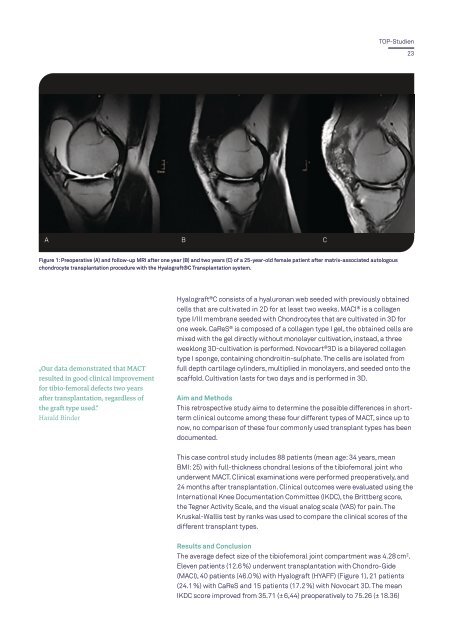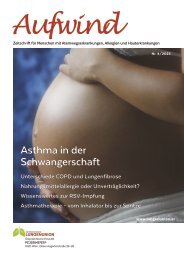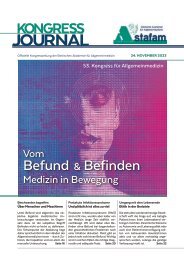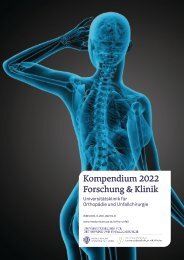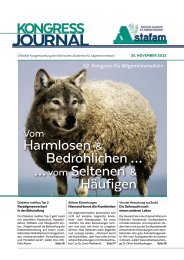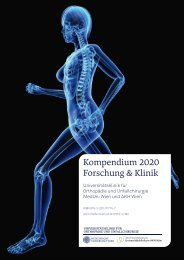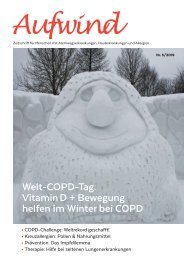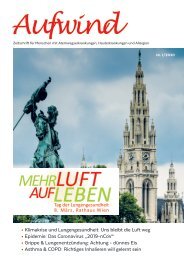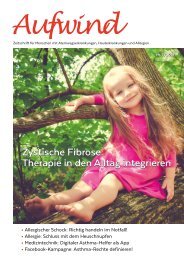Kompendium 2021 Forschung & Klinik
Universitätsklinik für Orthopädie und Unfallchirurgie MedUni Wien und AKH Wien; Leitung: o. Univ.-Prof. Dr. Reinhard Windhager www.meduniwien.ac.at/ortho-unfall www.unlimitedmedia.at/orthopaedie2021
Universitätsklinik für Orthopädie und Unfallchirurgie MedUni Wien und AKH Wien; Leitung: o. Univ.-Prof. Dr. Reinhard Windhager
www.meduniwien.ac.at/ortho-unfall
www.unlimitedmedia.at/orthopaedie2021
Sie wollen auch ein ePaper? Erhöhen Sie die Reichweite Ihrer Titel.
YUMPU macht aus Druck-PDFs automatisch weboptimierte ePaper, die Google liebt.
TOP-Studien<br />
23<br />
A B C<br />
Figure 1: Preoperative (A) and follow-up MRI after one year (B) and two years (C) of a 25-year-old female patient after matrix-associated autologous<br />
chondrocyte transplantation procedure with the Hyalograft®C Transplantation system.<br />
„Our data demonstrated that MACT<br />
resulted in good clinical improvement<br />
for tibio-femoral defects two years<br />
after transplantation, regardless of<br />
the graft type used.“<br />
Harald Binder<br />
Hyalograft ® C consists of a hyaluronan web seeded with previously obtained<br />
cells that are cultivated in 2D for at least two weeks. MACI ® is a collagen<br />
type I/III membrane seeded with Chondrocytes that are cultivated in 3D for<br />
one week. CaReS ® is composed of a collagen type I gel, the obtained cells are<br />
mixed with the gel directly without monolayer cultivation, instead, a three<br />
weeklong 3D-cultivation is performed. Novocart ® 3D is a bilayered collagen<br />
type I sponge, containing chondroitin-sulphate. The cells are isolated from<br />
full depth cartilage cylinders, multiplied in monolayers, and seeded onto the<br />
scaffold. Cultivation lasts for two days and is performed in 3D.<br />
Aim and Methods<br />
This retrospective study aims to determine the possible differences in shortterm<br />
clinical outcome among these four different types of MACT, since up to<br />
now, no comparison of these four commonly used transplant types has been<br />
documented.<br />
This case control study includes 88 patients (mean age: 34 years, mean<br />
BMI: 25) with full-thickness chondral lesions of the tibiofemoral joint who<br />
underwent MACT. Clinical examinations were performed preoperatively, and<br />
24 months after transplantation. Clinical outcomes were evaluated using the<br />
International Knee Documentation Committee (IKDC), the Brittberg score,<br />
the Tegner Activity Scale, and the visual analog scale (VAS) for pain. The<br />
Kruskal-Wallis test by ranks was used to compare the clinical scores of the<br />
different transplant types.<br />
Results and Conclusion<br />
The average defect size of the tibiofemoral joint compartment was 4.28 cm 2 .<br />
Eleven patients (12.6 %) underwent transplantation with Chondro-Gide<br />
(MACI), 40 patients (46.0 %) with Hyalograft (HYAFF) (Figure 1), 21 patients<br />
(24.1 %) with CaReS and 15 patients (17.2 %) with Novocart 3D. The mean<br />
IKDC score improved from 35.71 (± 6,44) preoperatively to 75.26 (± 18.36)


